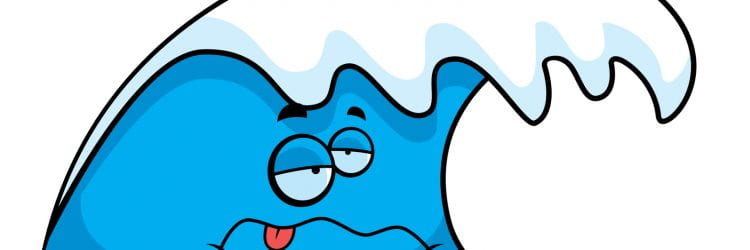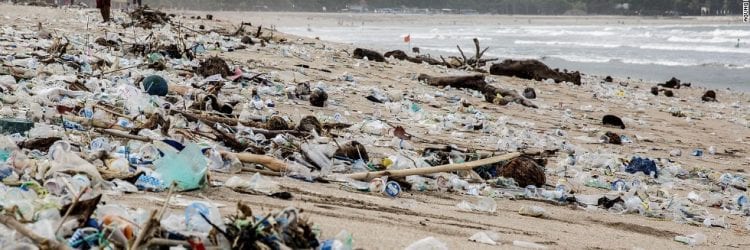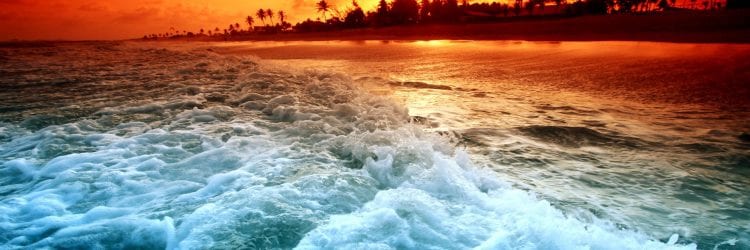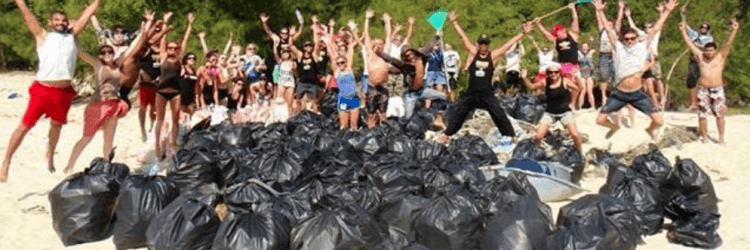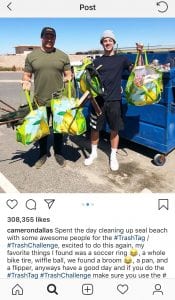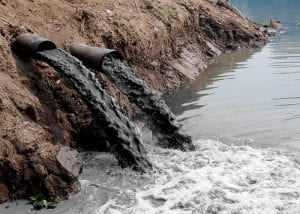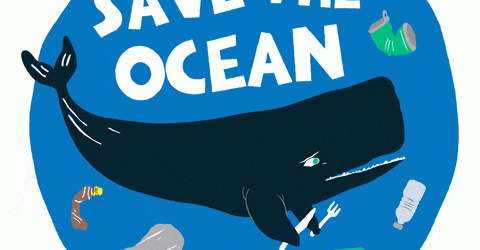We all know by now that most ocean pollution comes from the land. Here are some main reasons why eliminating ocean pollution just might save the world. Continue reading
Sea Sickness
The world’s most highly regarded climate scientists have been saying since 2018 that we only have 12 years left to undo the global warming damage we’ve done-or else. Yes, the big or else. The one where we exterminate the human race and many other species along with it. We’re killing ourselves and life as we know it because of decades of poor manufacturing habits and a lack of knowledge on how our plastic use truly affects all living and oceanic ecosystems. Even now, we cannot fully grasp the extent to which our presence and waste impacts our oceans since most of them are relatively unexplored. This being said, we have somehow managed to damage all but 4 percent of the oceans on Earth according to an article released by The Guardian.You may be asking what the oceans have to do with saving the planet. The truth is, they have everything to do with saving life on Earth since all life is interconnected. Here is the truth behind how important it is that we protect what is protecting us.
Oxygen
You may already know that plants produce the oxygen we breathe. What you may not know however, is that over half of the air we breathe comes from plants in the ocean like phytoplankton and seaweed. You could essentially call phytoplankton the lungs of the ocean, and we are suffocating them with our plastic use. According to an article released by U.S. Pure Water, phytoplankton die off by de-oxygenation, which is a process by which the presence of plastic blocks light from entering the ocean, therefore preventing the phytoplankton to photosynthesize and produce the oxygen we need. Since phytoplankton act as a major foundation or building block species in the ocean, their scarcity inevitably has an effect on the whole oceanic food chain.
Climate Regulation
This may be the most impending threat towards the human race, and we need to treat our oceans with care now more than ever. Climate change is a real threat that will only continue to get worse if we continue at the rate we are now. Luckily, the oceans do a wonderful job at reducing the severity of climate change, but they would be able to do an even better job at helping us out if we had helped our oceans sooner. According to the National Oceanic and Atmospheric Administration, our oceans are a vital lifeline regarding the temperature of our planet. “Ocean currents act much like a conveyer belt, transporting warm water and precipitation from the equator toward the poles and cold water from the poles back to the tropics. Thus, currents regulate global climate, helping to counteract the uneven distribution of solar radiation reaching Earth’s surface. Without currents, regional temperatures would be more extreme—super hot at the equator and frigid toward the poles—and much less of Earth’s land would be habitable.”
It’s the job of the ocean to absorb excess heat and greenhouse gases released into the atmosphere. With the excess amount of greenhouse gases we are producing, our oceans our being forced into overdrive, absorbing higher amounts of heat which melts glaciers, increases seal levels, and even alters the patterns of currents. Glaciers also help absorb excess sunlight and protect our ozone layer. As you can imagine, the warming of our oceans dramatically affects the effectiveness of surrounding ecosystems and when they all start to fail, we do too.
Sea Sickness
The term sea sickness has been used to describe the feeling one gets when the movement of the ocean throws off their equilibrium, causing the individual to become nauseous. I like to think we are doing the same thing to our oceans. It’s our oceans that are becoming sick and poisoned with our carelessness with the environment across the board. The state of our oceans will worsen with climate change and plastic pollution, and once we lose the benefits the sea offers us, we lose our lives. If you feel strongly about preserving our planet and protecting the lives of future generations, sign the petition to end plastic pollution at earthday.org. We are clearly the sick ones if we have the knowledge we do now and never make a change to show our oceans the love they have shown us.
Little Things You Can Do To Help Stop Ocean Pollution
After reading our many blog posts about how awful we all are for mindlessly letting our trash find its way to the ocean and into the bellies of marine life, you might be wondering what in the world you can do to help stop ocean pollution. Well, you came to the right place! Of course, with the millions of tonnes of trash that is in the ocean, it might seem hopeless. Don’t give up! Nothing will ever get better if we don’t try to do our part. So, here are a few things you can do to help….
Ocean Pollution Ruins Marine Wildlife as well Our Economy
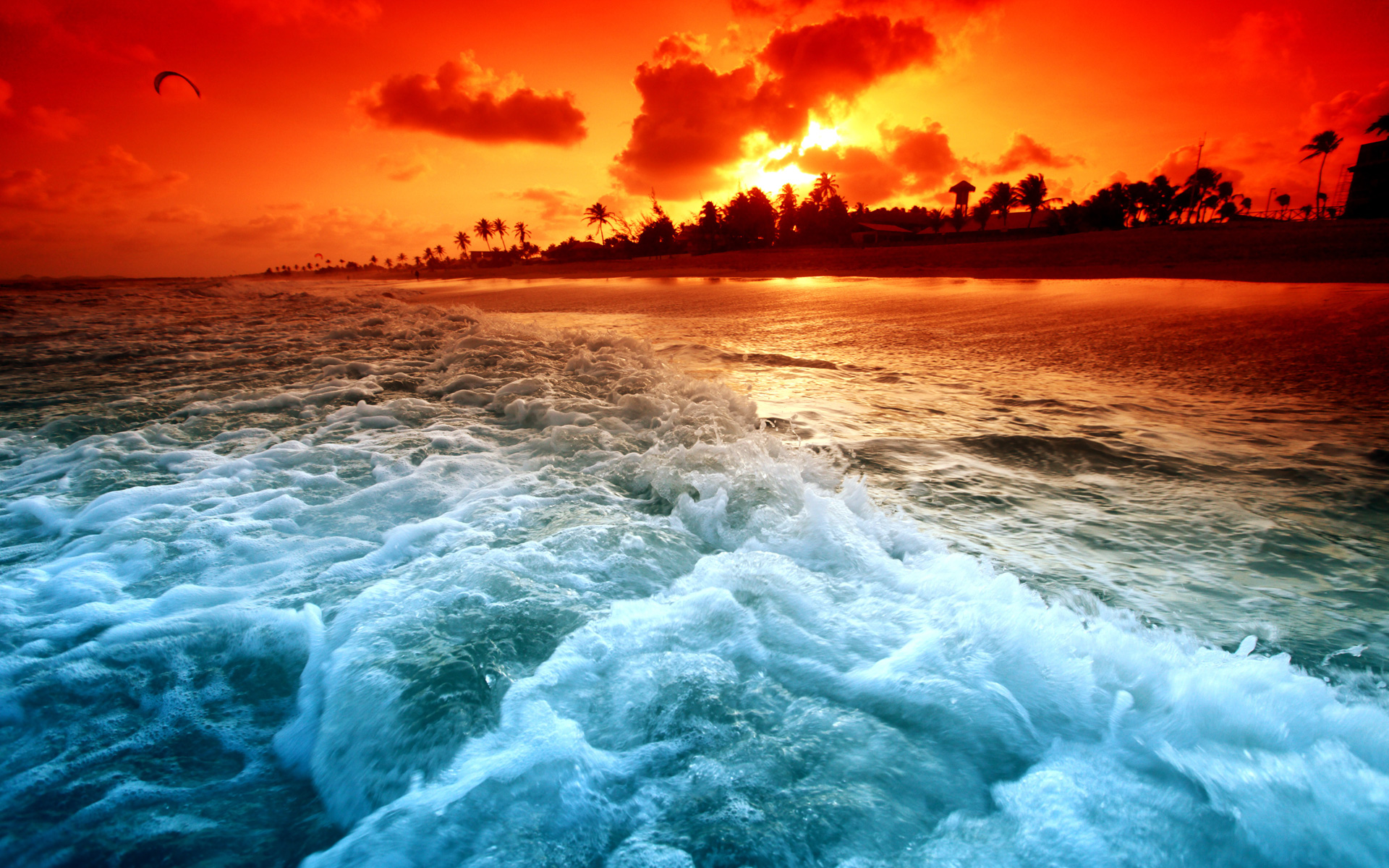 Ocean Pollution has always been a huge problem in our society. It destroys marine wildlife and contaminates our beaches and oceans. A new study has come out also depicting how ocean pollution is not only causing destruction to our seas, but also to our economy. The new study on ocean pollution relief has come to say that ocean pollution causes 2.5 billion dollars in damage annually. This is a ridiculous amount of money and destruction that needs to cease immediately. The research group that conducted this study are based in the UK and pointed out that upwards of 10 million metric tons of plastic alone was dumped into our oceans in just the year 2010. The plastics often breakdown in the ocean into smaller palstic fragments which will never fully degrade. This plastic pollution contaminates an extraordinary amount of seafood that causes recalls. 20% of researchers say food contamination comes from ocean pollution itself. These devastating statistics show that ocean pollution not only causes harm to our seas, but absolutely crushes our economy. In order to put a stop to this we have to join commuities together and voice our concern with how badly we want to fix ocean pollution. There are many small steps we can take to slow down ocean pollution such as: recycling properly, supporting bans, and consistently participating in beach cleanups. Spread the word as much as you can on how catostrophic ocean pollution is because if we don’t it’ll only get worse.
Ocean Pollution has always been a huge problem in our society. It destroys marine wildlife and contaminates our beaches and oceans. A new study has come out also depicting how ocean pollution is not only causing destruction to our seas, but also to our economy. The new study on ocean pollution relief has come to say that ocean pollution causes 2.5 billion dollars in damage annually. This is a ridiculous amount of money and destruction that needs to cease immediately. The research group that conducted this study are based in the UK and pointed out that upwards of 10 million metric tons of plastic alone was dumped into our oceans in just the year 2010. The plastics often breakdown in the ocean into smaller palstic fragments which will never fully degrade. This plastic pollution contaminates an extraordinary amount of seafood that causes recalls. 20% of researchers say food contamination comes from ocean pollution itself. These devastating statistics show that ocean pollution not only causes harm to our seas, but absolutely crushes our economy. In order to put a stop to this we have to join commuities together and voice our concern with how badly we want to fix ocean pollution. There are many small steps we can take to slow down ocean pollution such as: recycling properly, supporting bans, and consistently participating in beach cleanups. Spread the word as much as you can on how catostrophic ocean pollution is because if we don’t it’ll only get worse.
#Trash Tag, You’re It!
Listen up, social media fanatics. There’s a challenge that’s been sweeping the internet recently that asks users to spread the goodness and clean up their environment! This trend known as the #TrashTag challenge isn’t exactly a new phenomenon either. If it sounds familiar, you are correct, and if you’ve never heard of it, you’ve stopped at the right place. Let’s dive into what the Trash Tag challenge is, why it matters, and how you can join the movement.
What is the Trash Tag Challenge?
The Trash Tag challenge began in 2015 by the outdoor gear company, UCO, in an effort to get people to care about the places in which they lived and become aware of the condition of the world around them. It didn’t really start to catch fire however, until this past March when a man from Arizona named Byron Román shared a picture of ecologist and activist Drici Tani Younes on Facebook. The picture featured Younes in a polluted area and then an after picture in that same area after he had cleaned it up. Román shared this post with a message that prompted apathetic young people to make a difference and do some good while they were at it. Since then, Román’s post has accumulated over more than 100,000 likes and 332,000 shares, growing by the day and helping people of all ages put down their phones and pick up a pair of gloves and a trash bag.
Byron Román’s share on Facebook
Why Is This Hashtag Important?
One of the many reasons that this hash tag matters is because it’s quite frankly refreshing. Unlike the many challenges that urge us to swallow whole spoonfuls of cinnamon or drink sprite and then eat bananas, this challenge harms no one in the process and offers all parties involved a more beneficial outcome. With the rate at which content moves across social media platforms and goes viral, it’s promising to see a message like this one gain momentum because it shows that many of us understand the dangers that wait for us if we continue to treat our environment the way we do. Because this hashtag also encourages us to go out in the world and help maintain our parks, beaches, and rivers, it also ensures we are physically removing some of the trash that litters our planet. With the rate that this trend is spreading at, it’s wonderful to see the change that comes from the power of social media.
But will this power be enough? The answer unfortunately is no. That doesn’t mean it’s time to flail our arms around in the air and boycott the trash tag challenge, but it does mean that we need to think more about the root cause of the plastic pollution epidemic. Although movements of this nature and efforts to recycle and reuse are not enough, they matter that much more when practiced in conjunction with tighter corporate and governmental practices. According to Mirjam Kopp, a global project leader on plastic pollution at Greenpeace, “The problem with plastics is not simply a litter problem, it is a pollution problem created by corporations and mismanaged by governments, and it should be treated as an inherently dangerous substance.” Who says we can’t start a new movement that encourages us to protest outside of these corporations that abuse their power and capture/share those moments on social media?
How You Can Get Involved
You know the drill! Find a nearby park, river, beach, or any area that needs cleaning, and take a picture of the area before you get to work. Clean the area, take a picture of it with you and your friends, and then post the final before and after pictures with the hashtag. Not only will you feel accomplished and satisified, but you never know who might see your post and feel compelled to try it too. All in all, movements like this do affect our environment and make a difference in our own lives, too. Share your best pictures with the Blue Velvet team and we will repost them here on our blog! Keep up the hard work Blue Velvets, and always remember the importance behind sharing the good in our world.
Instagram influencer and celebrity Cameron Dallas participating in the Trash Tag challenge
Plenty of fish in the sea?
If there is one thing you may have learned from our previous blog posts it is that there is a lot of plastic in the ocean. Not only that but also all the negative practices that lead to all this plastic. Well in addition to plastic pollution, we would like to introduce another problem that is harming the ocean and its wildlife. It’s time to talk about overfishing.
Overfishing is essentially when fish are being caught (commercially and non-commercially) at a faster rate than they are breeding, leading to a depletion of these wildlife populations.
What are the causes?
Overfishing tends to happen due to the lack of regulation and oversight of the fishing industry. They are barely being monitored and when there are rules in place they are usually also overlooked and ignored. In addition to a lack of regulation, there is also a lot of unreported fishing. Lastly, fishing areas are very unprotected and only about 1.5% of the oceans have been declared protected areas making the rest of them vulnerable to these practices.
What are the effects?
According to the Food and Agriculture Organization of the United Nations the number of overfished stocks globally has tripled and one-third of the world’s assessed fisheries are currently pushed beyond their biological limits.
Not only is overfishing affecting the fish population but the practices used to catch these fishes are also a threat to other non-targeted marine animals and their ecosystem. They are also endangering huge populations of people who primarily rely on it. Which might then lead to a food crisis.
Other effects include (thanks to conserve-energy-future.com) :
- Threat to local food sources
- Unitented catches
- Poor coral reef health
- Removal of essential predators
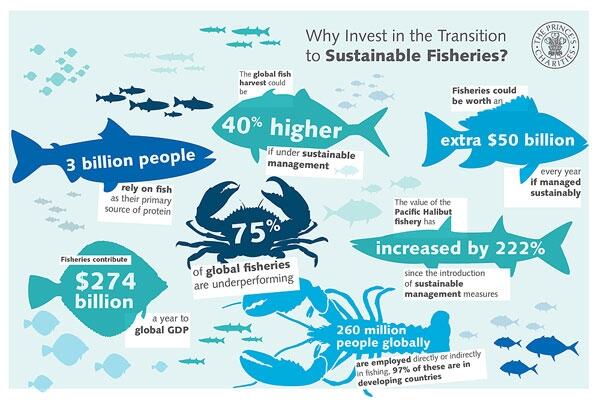
What are the solutions?
There definitely needs to be more cooperation from the government to set more regulations and have policies to protect the ocean and wildlife.This includes catch limits, careful marine planning, and a cracking down on illicit fishing. Developed countries should also continue to reinforce the ones in place. With that said, educating the public and retailers who are participating in this by purchasing endangered fish species. Instead they should purchase from sustainable fisheries and pressure those that are not to do so as well. Not only should retailers be educated but so should consumers. As a consumer you should be aware about what you are buying and avoid consuming endangered fish species.
Again, plastic pollution is not the only problem the ocean faces. We must be aware of other issues and overfishing is one of them.
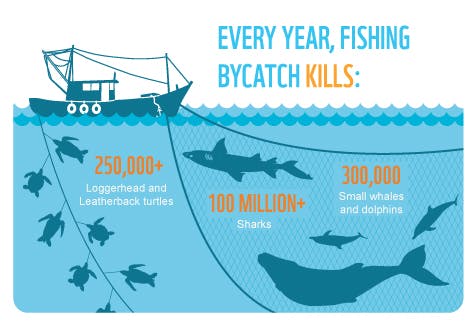
How Nonpoint Source Pollution is the Main Cause of Ocean Pollution
As most of us ponder about ocean pollution, as we do, we tend to entertain the idea that most of the pollution our ocean endures comes from plastic. This is what most ocean pollution activists preach when demanding help for our beautiful oceans. Yet, there is something even greater than just plastic contaminating our waters. Nonpoint source pollution is killing our oceans and here’s how. Nonpoint source pollution or NSP includes many small sources that can affect our oceans. Septic tanks, cars, boats, trucks, and various larger sources drop small amounts of oil onto roads and parking lots. Some of this oil makes its way to our oceans. This oil is unsafe for our marine wildlife and oftens harms or even kills our marine animals. This oil pollution makes up for a good part of the contamination our oceans receive. Now, what can we do to help curb this awful pollution. Correcting NSP is not an easy task since there are so many vehicles on the road and in our waters. What we have done so far is blocking off certain gateways to our waters to stop the oil contamination. This is effective, but remains extremely costly. So, our best bet is to begin at the main source. Many companies are promoting hybrid vehicles along with electric only cars. These vehicles can be extremely helpful to our environment by saving our ozone layer, but it can also be extremely beneficial by removing oil from our roads. So, by considering owning a hybrid car or electric, it’ll benefit our environment tremendously through the air and our oceans.
What Is Pollution?
Many people support and promote the change for ocean pollution but not many actually know what pollution really is. Allow me to explain what pollution is and how it relates to ocean pollution and the other different types of pollution. Continue reading
How Technology Is Helping Clean Our Oceans
Now that we have talked a lot about the extreme issue of pollution in our oceans, we want to discuss the positive ways that people are trying to help!
Get Ready for Keep Austin Beautiful Day
Blue Velvet is based in Austin, Texas. Although we strive to raise awareness and educate on ocean pollution in the United States, we also try and support our local community whenever we can. Continue reading


